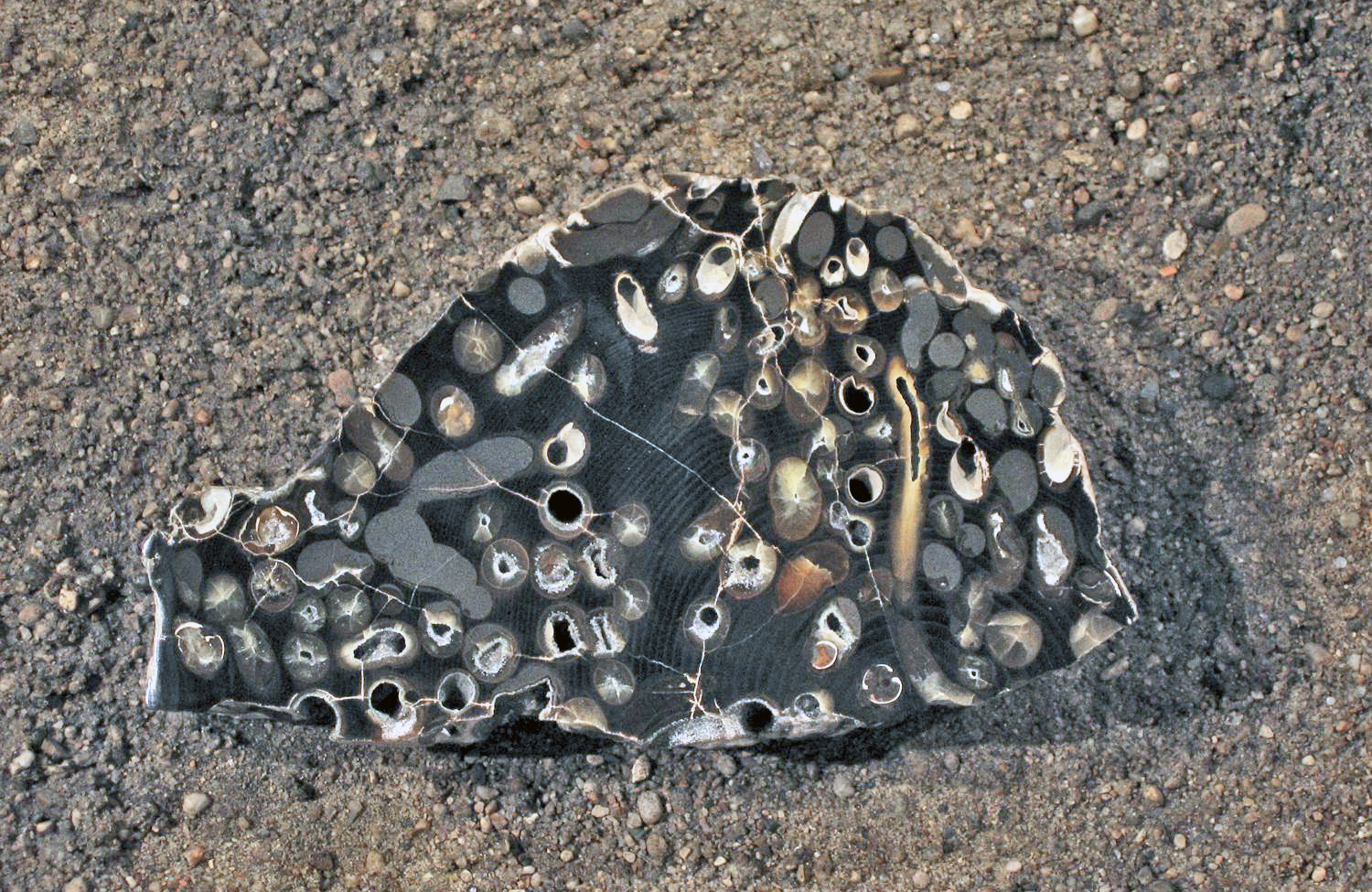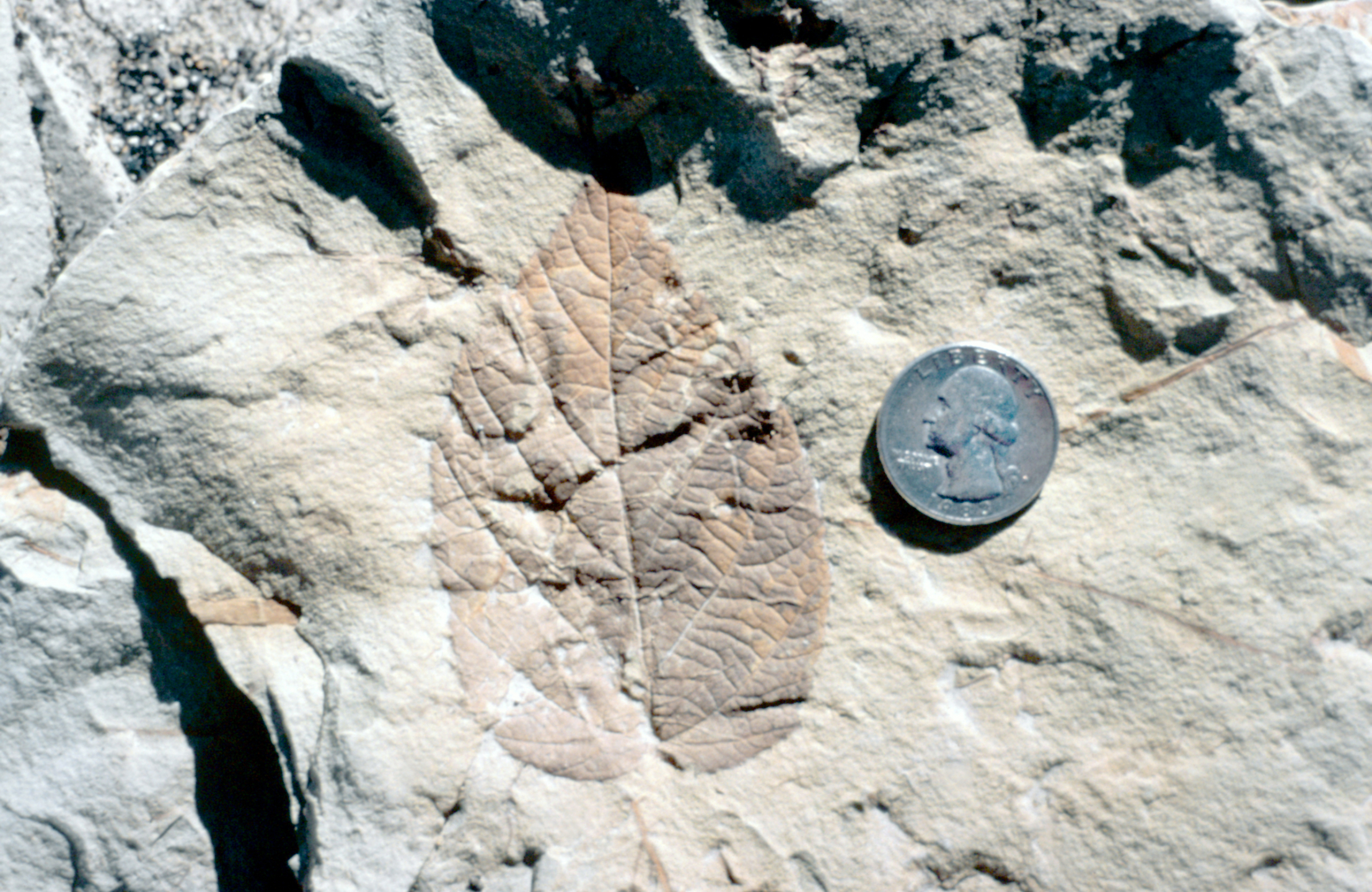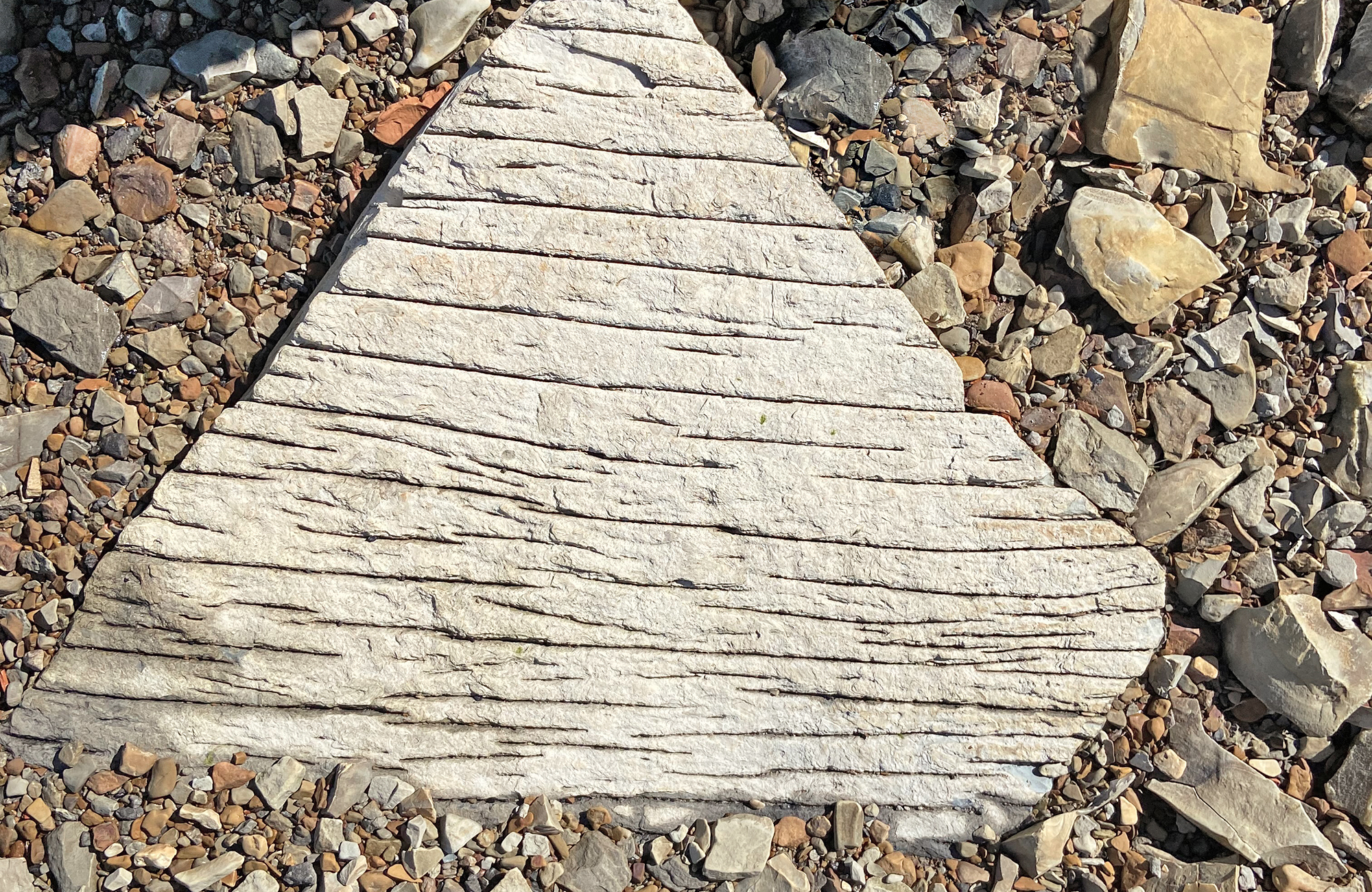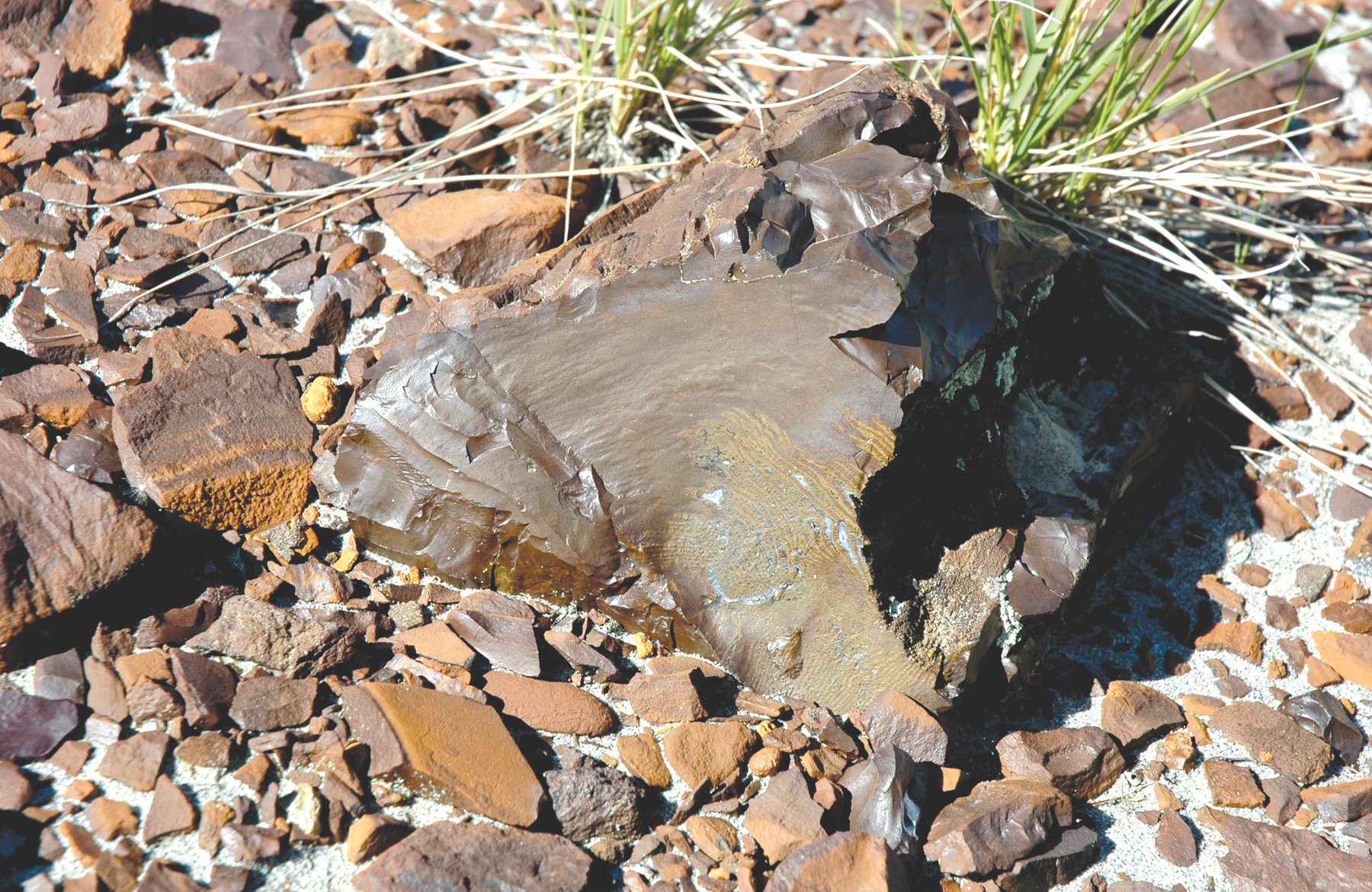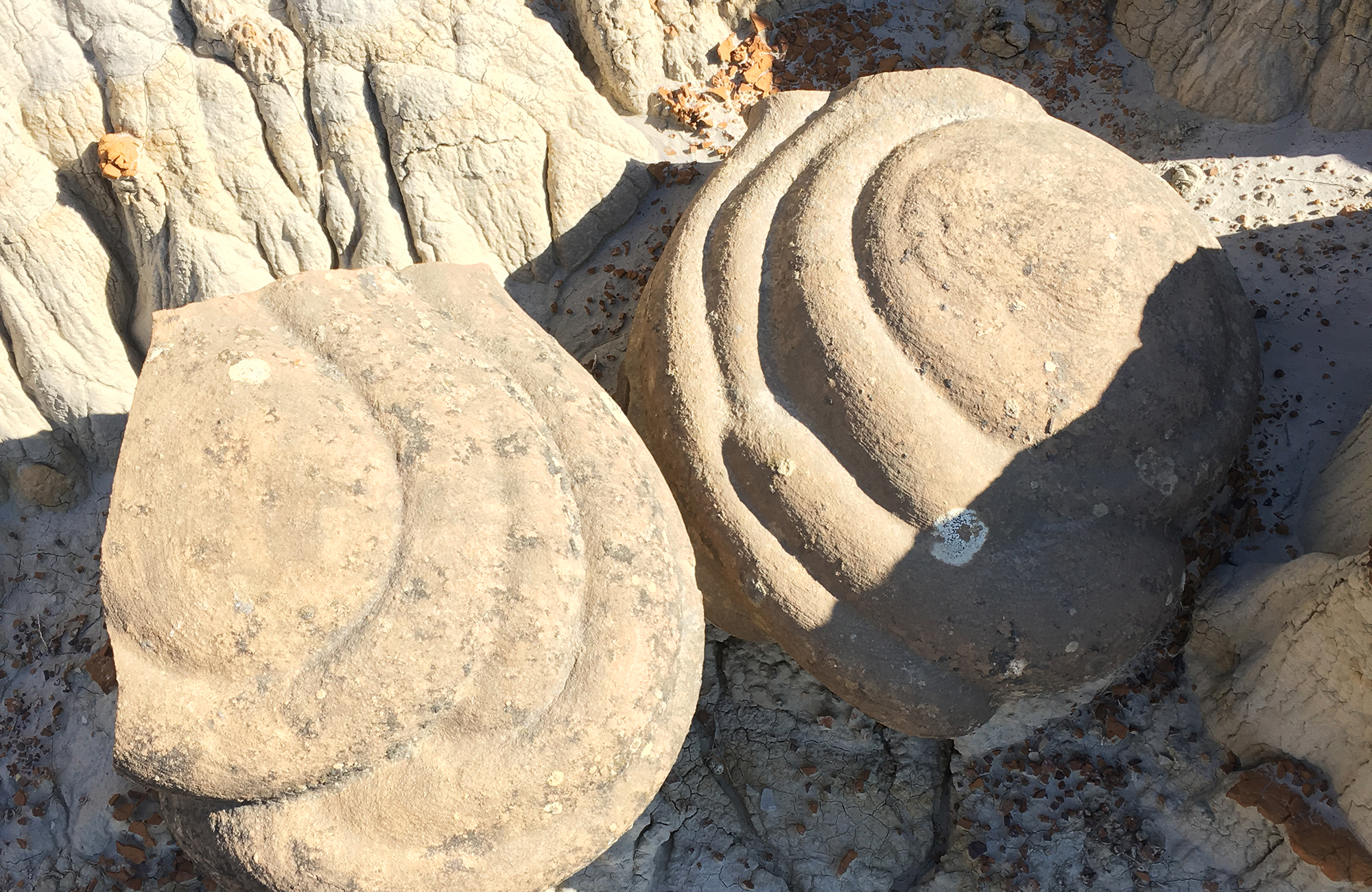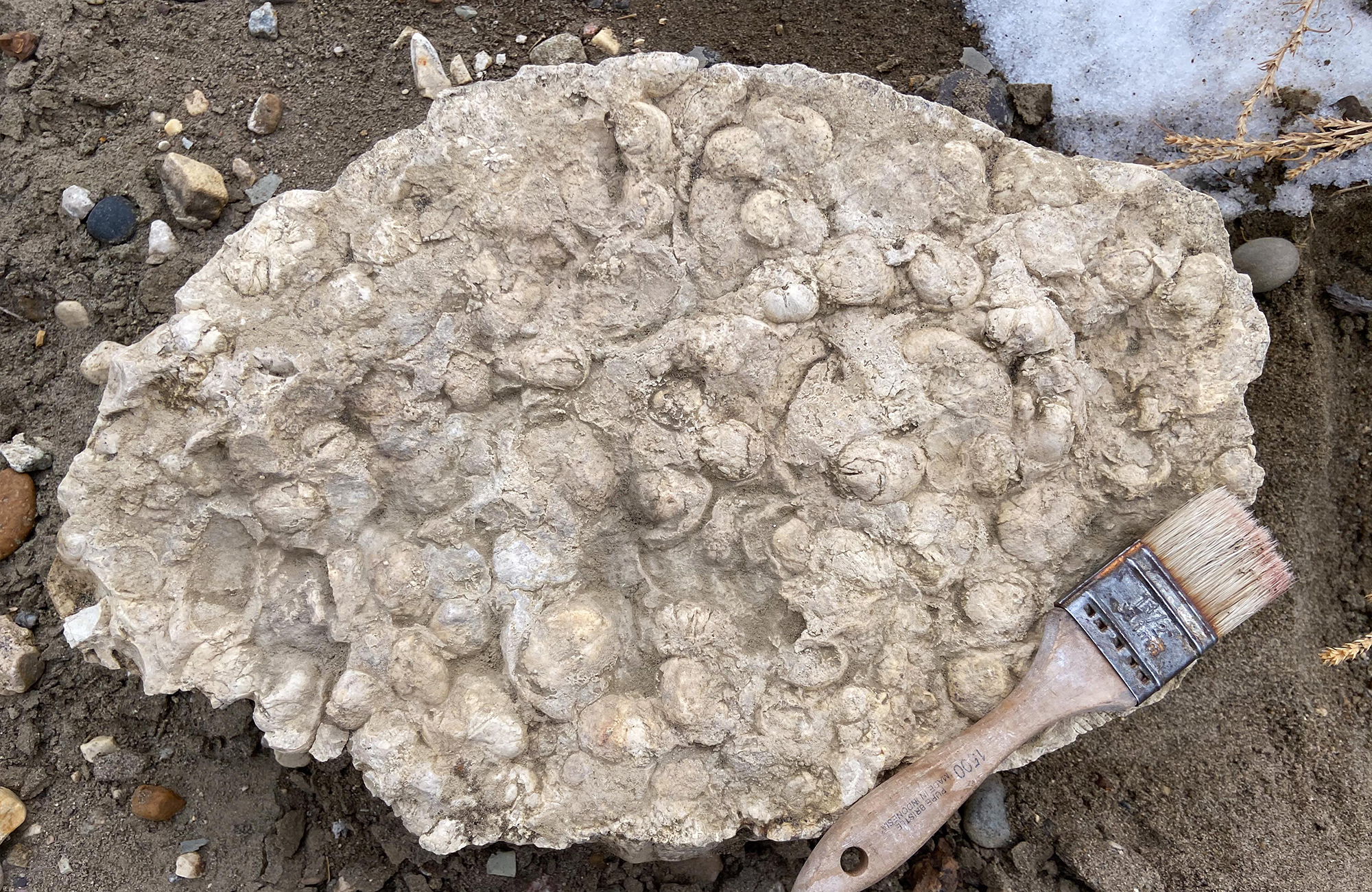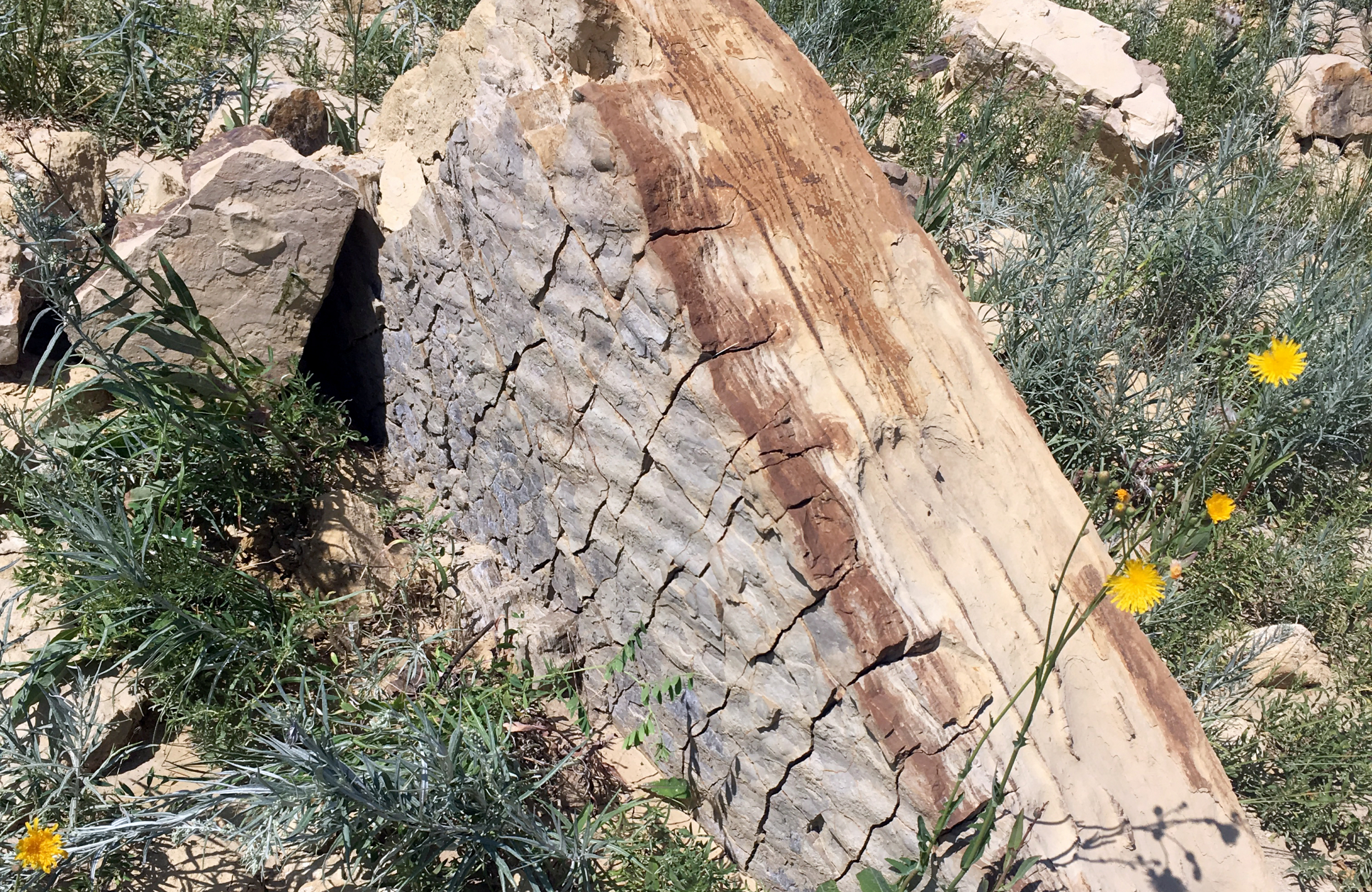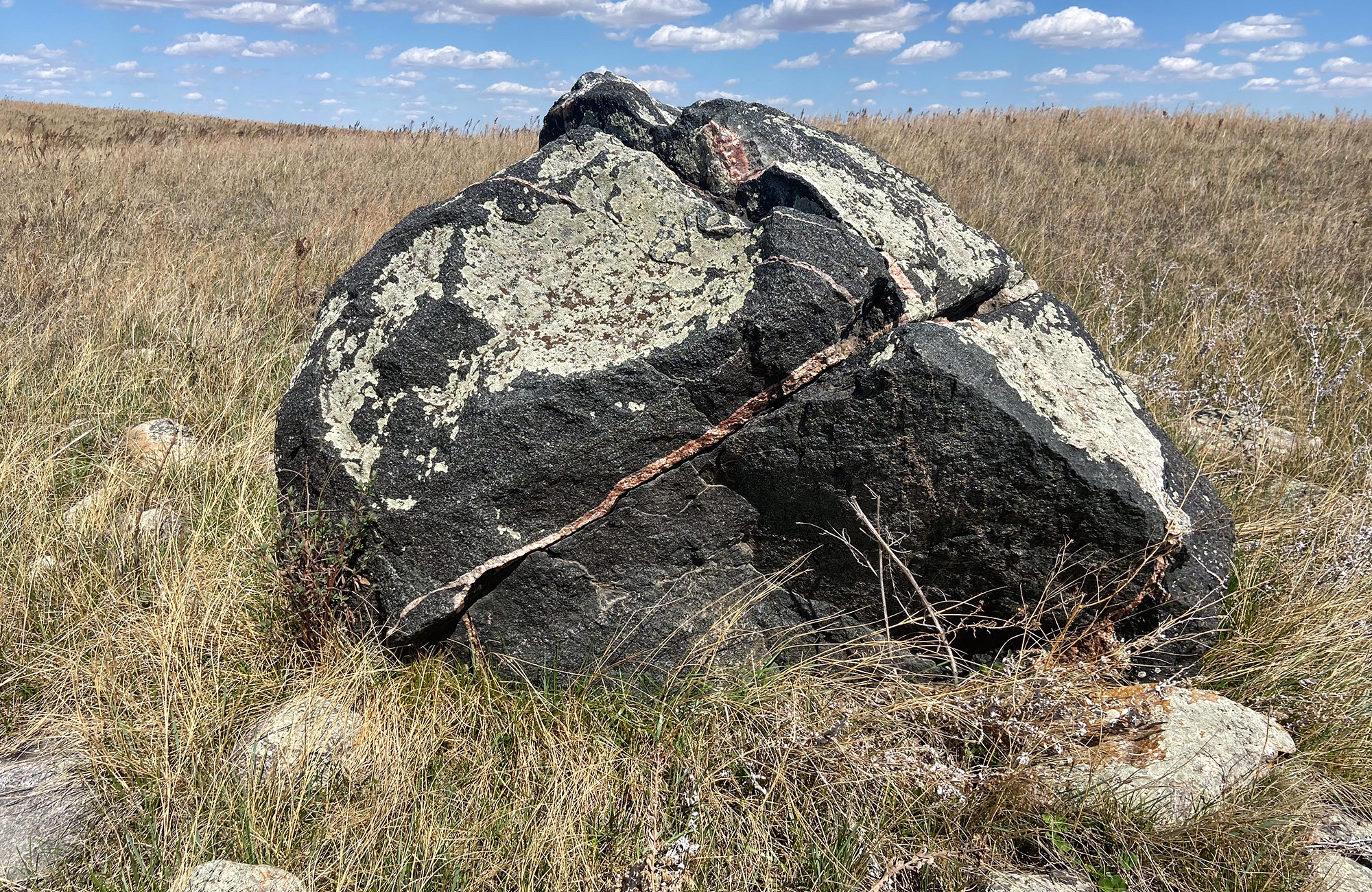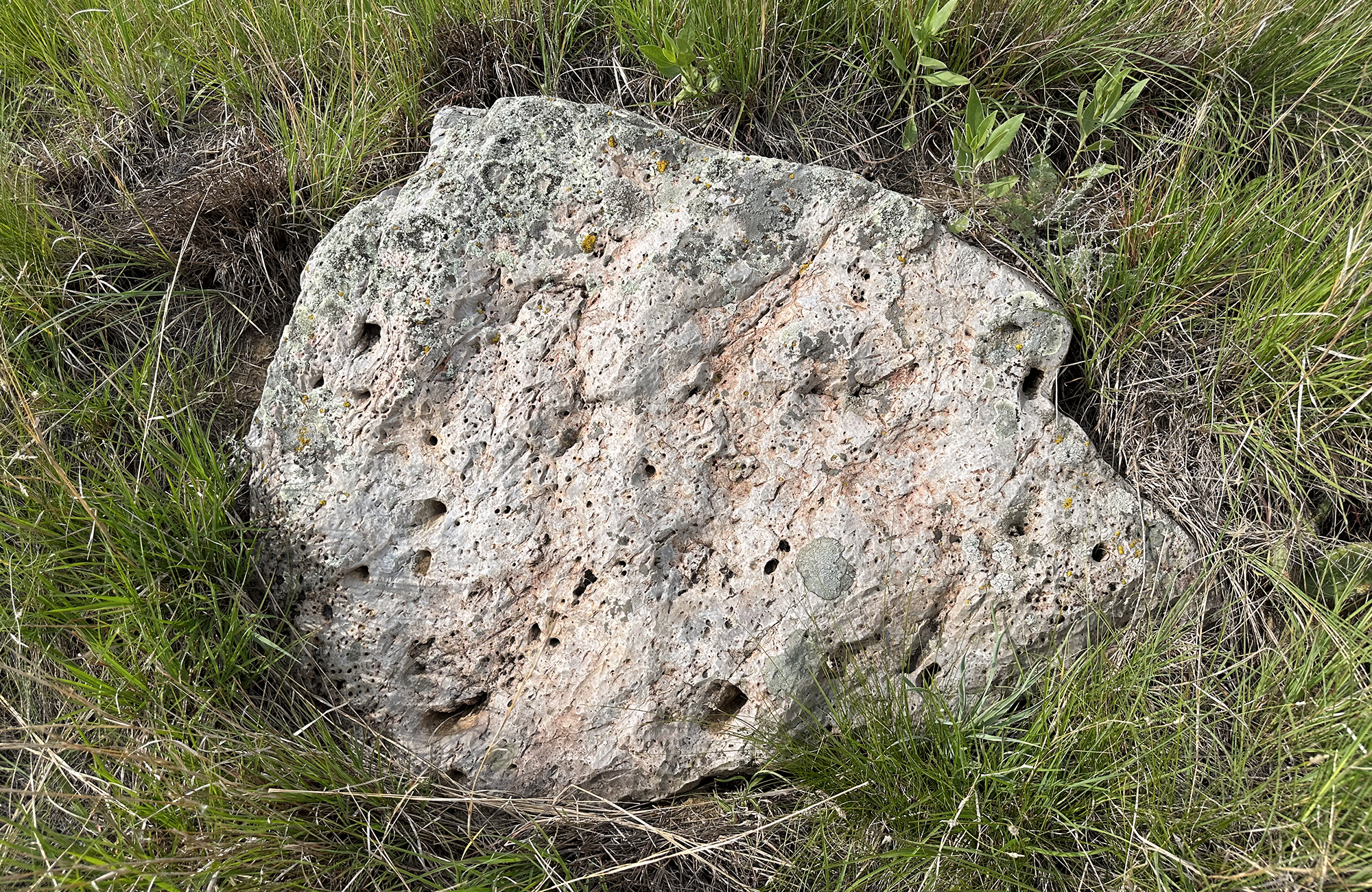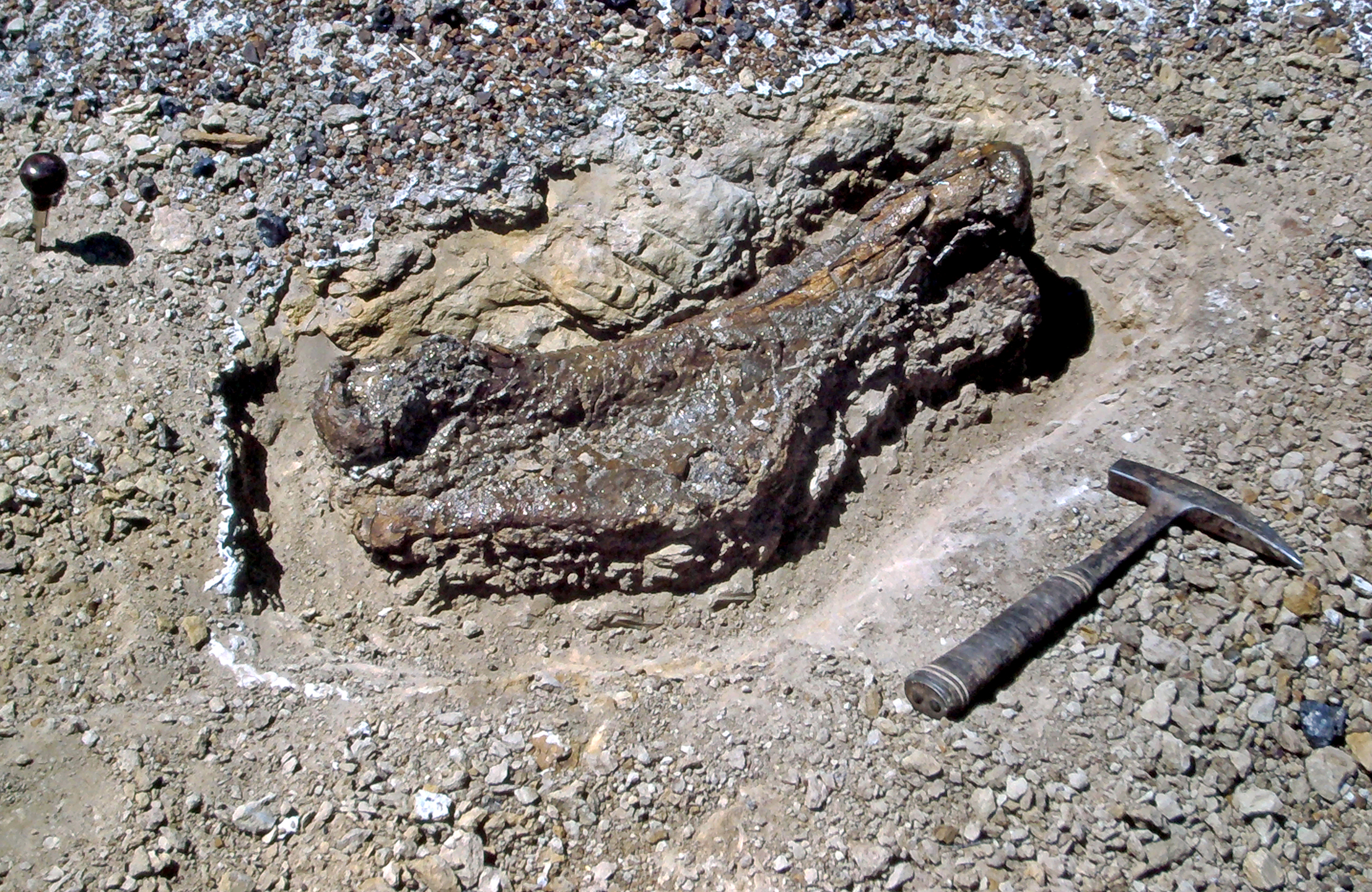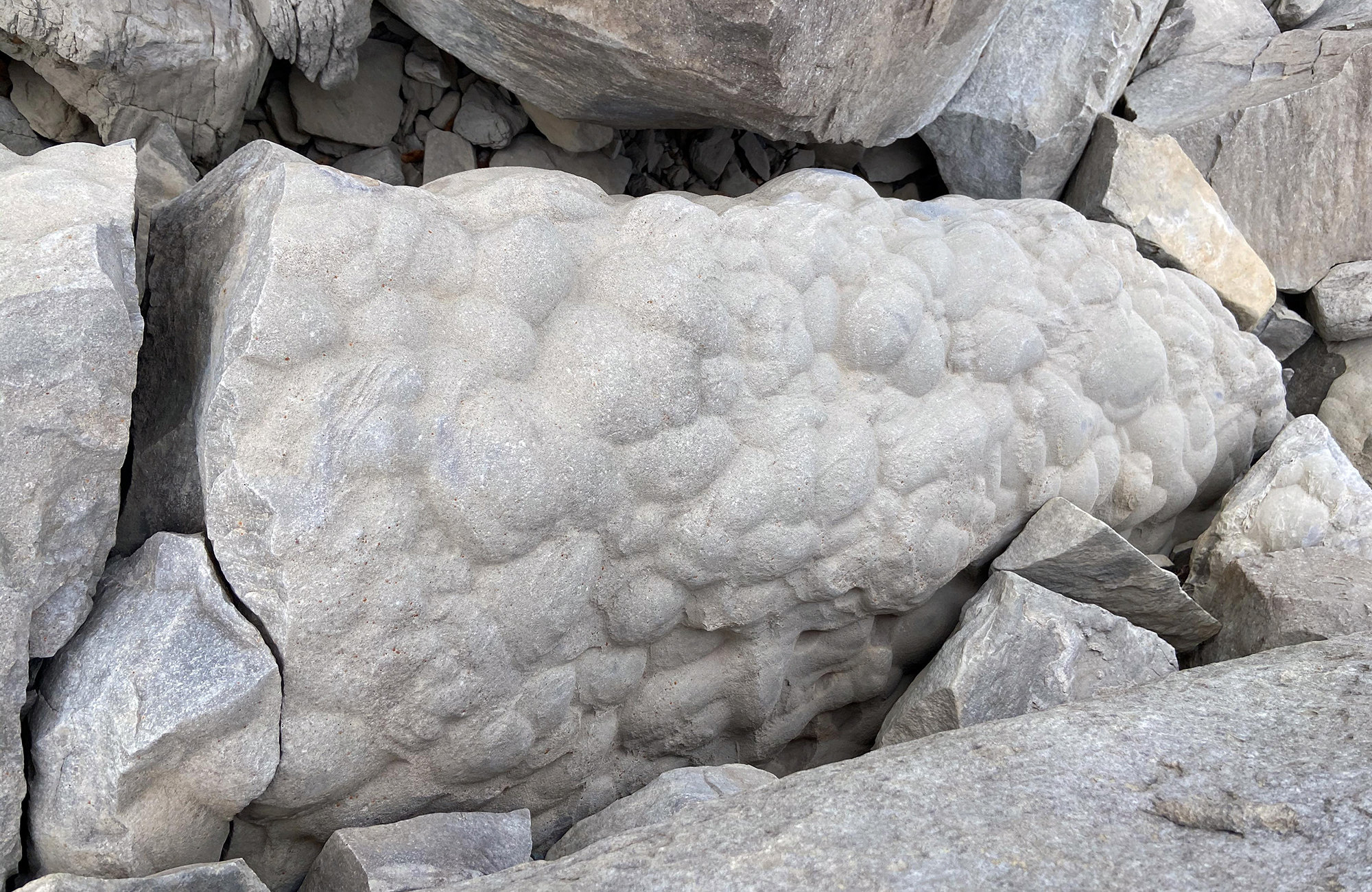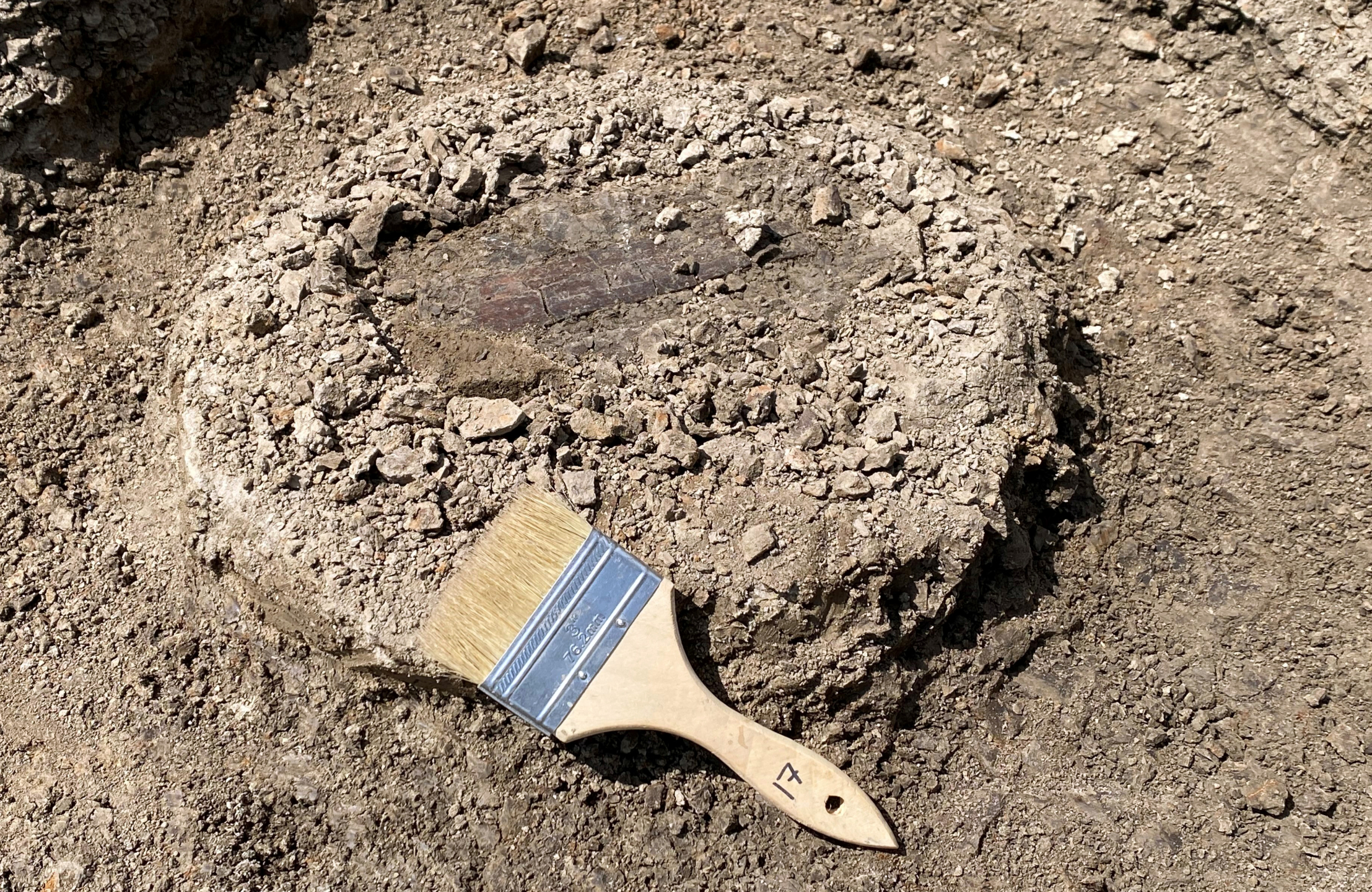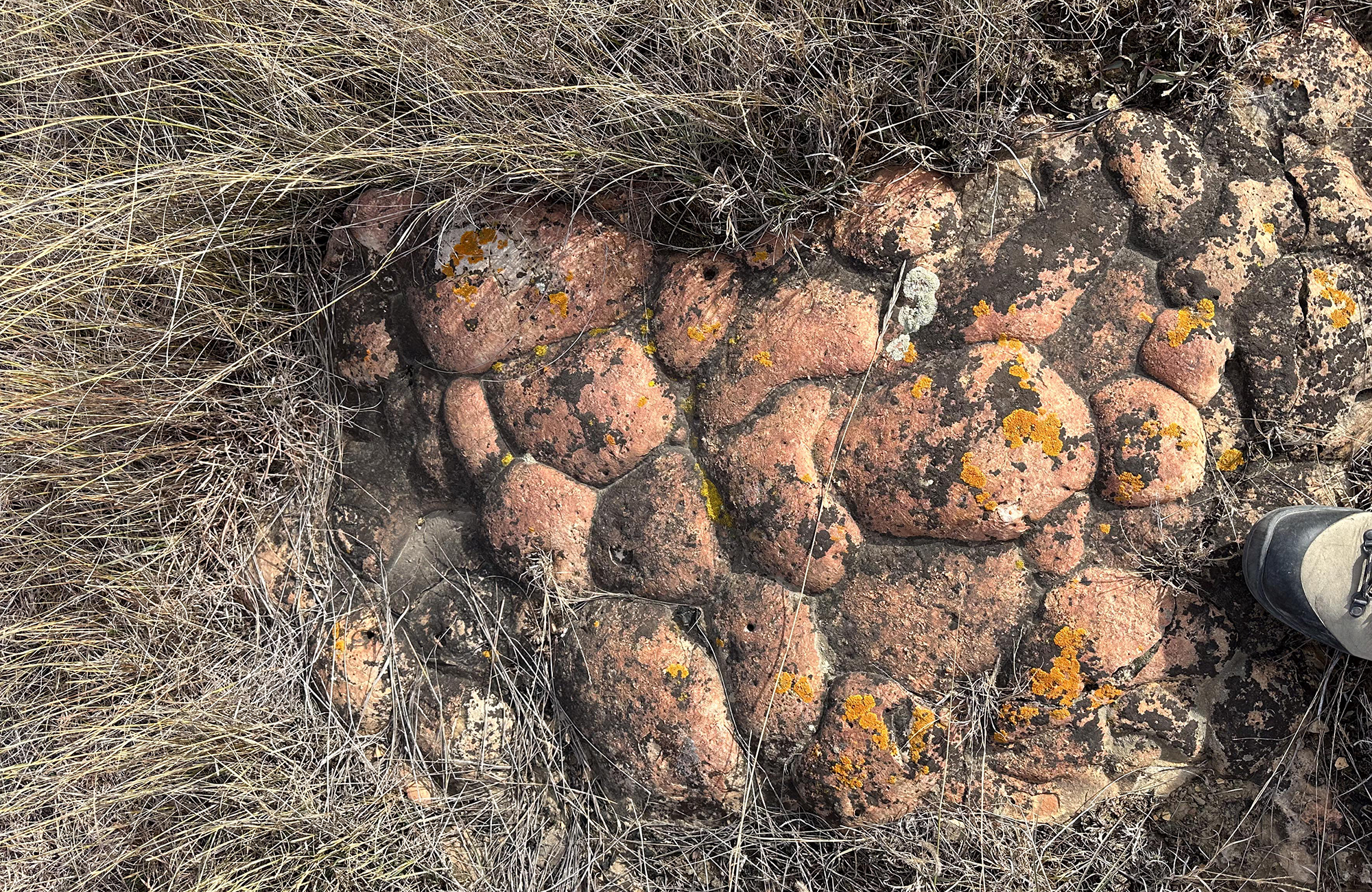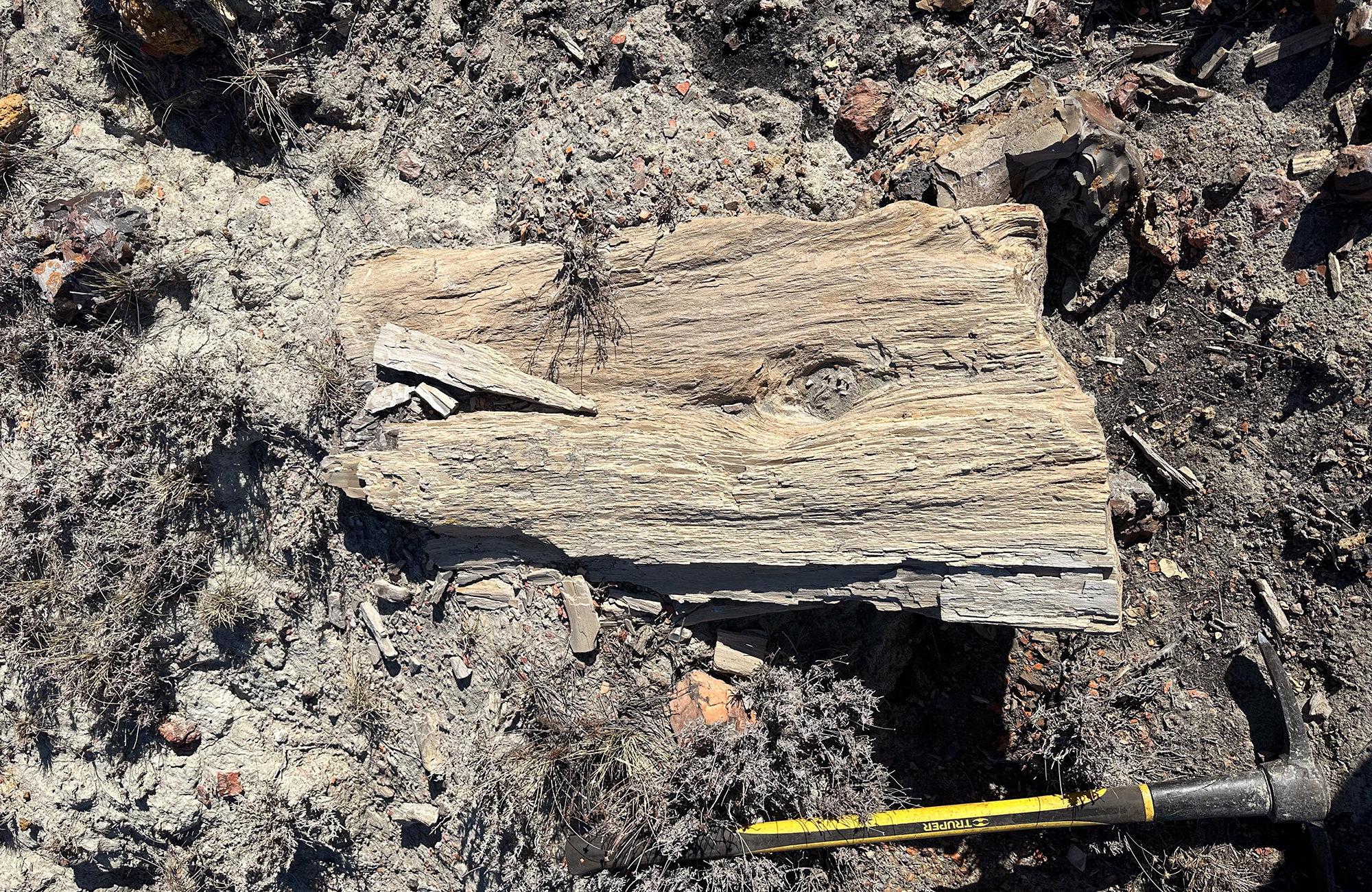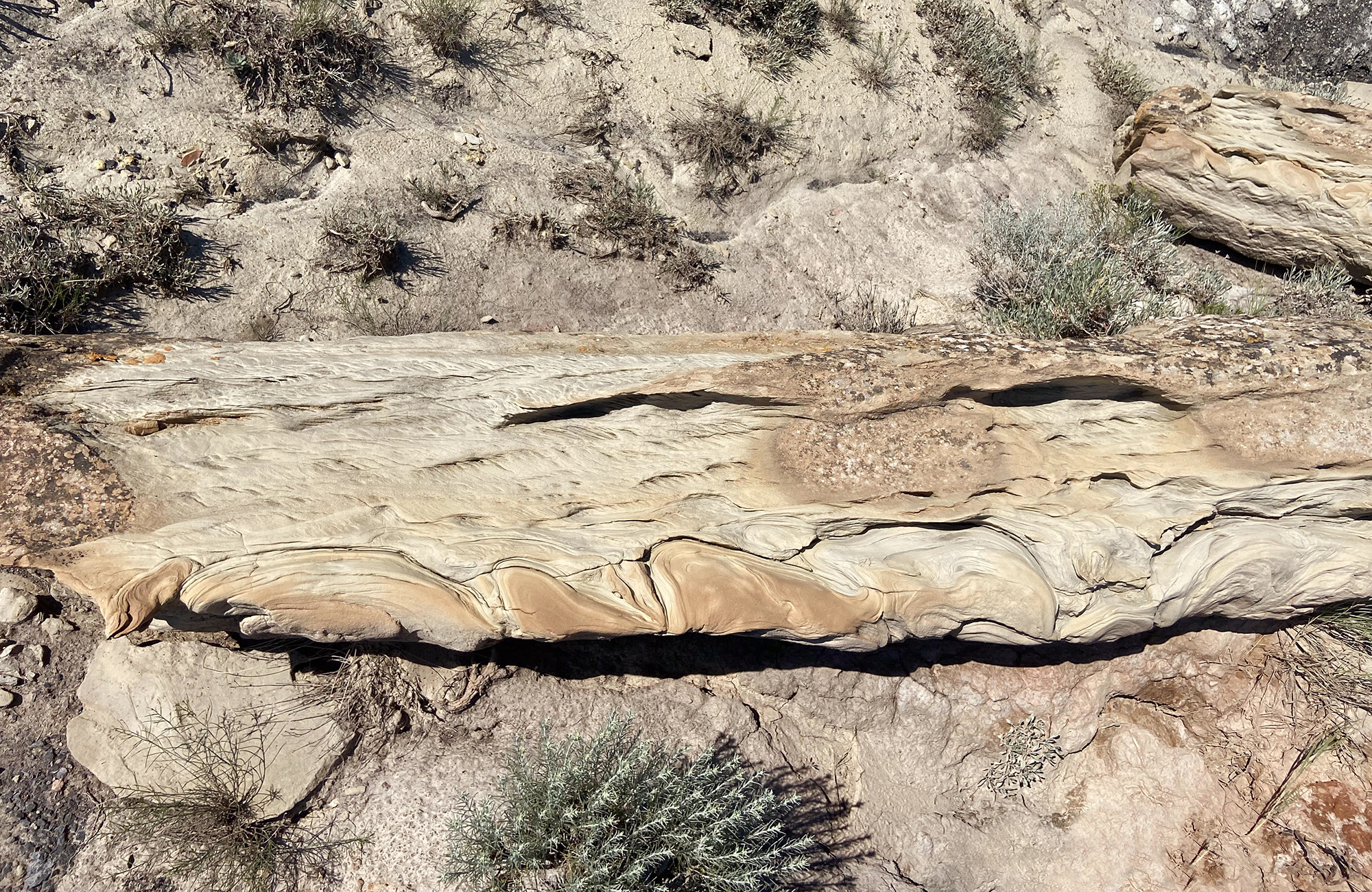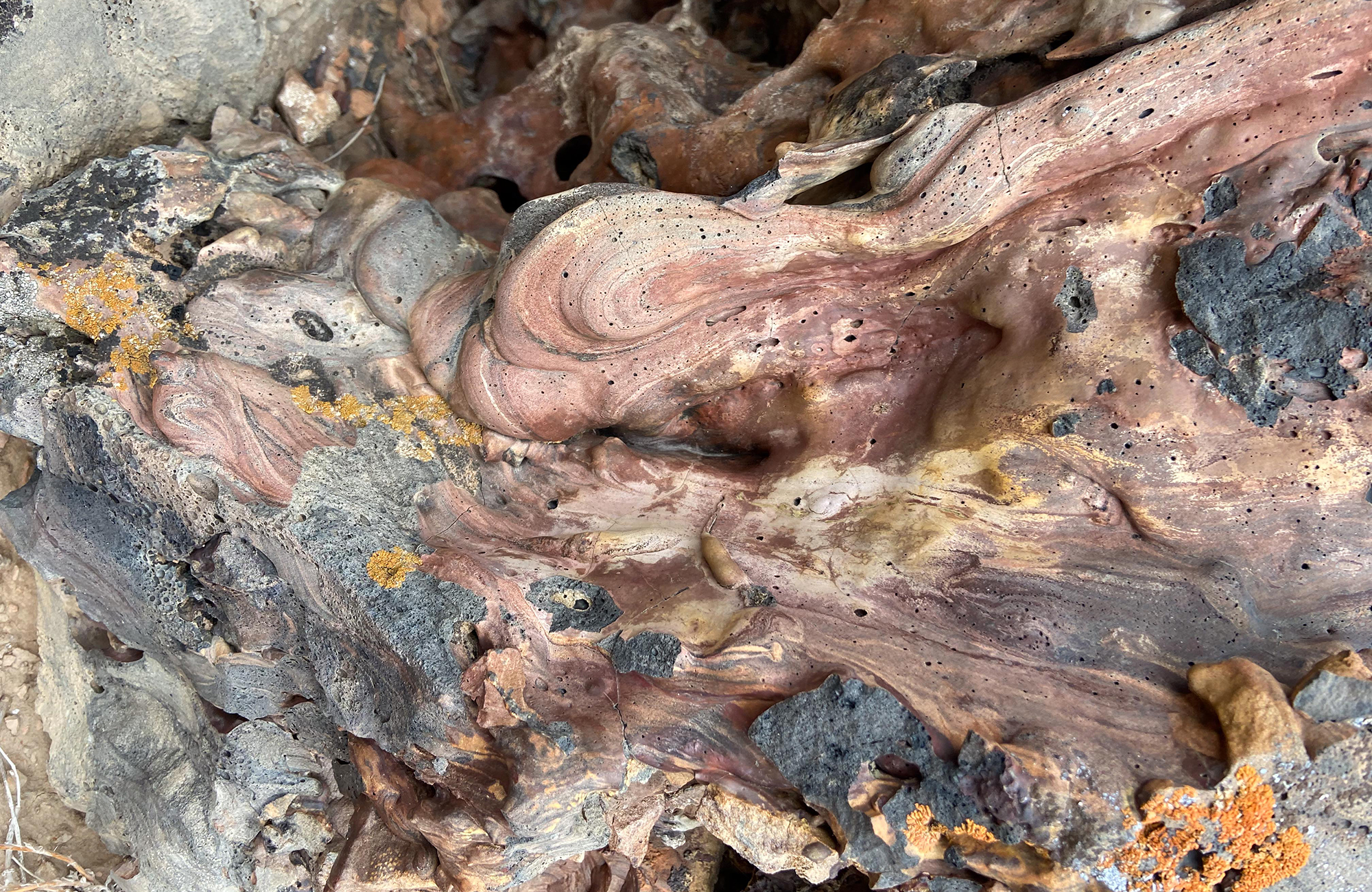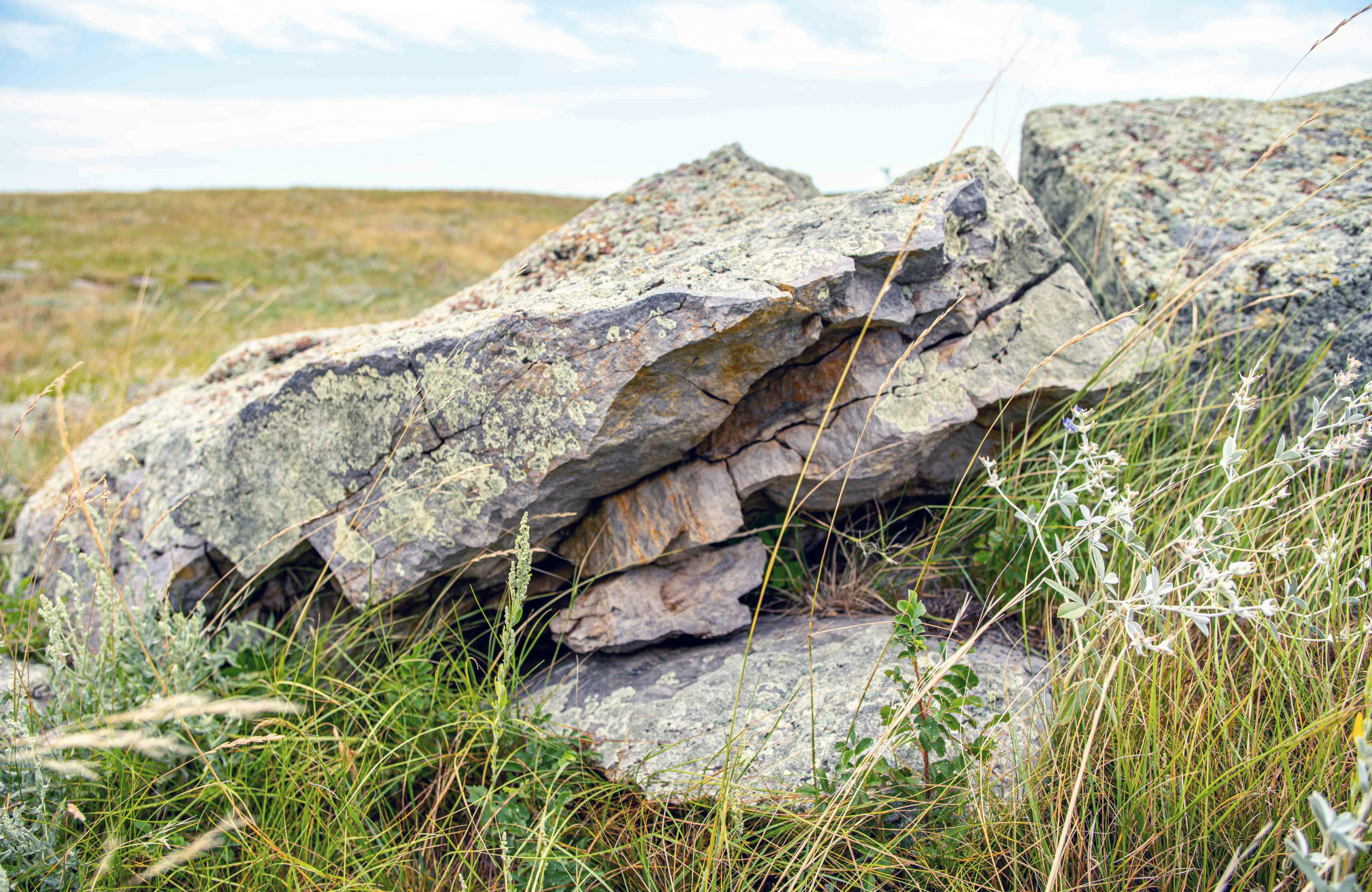“Rocks are records of events that took place at the time they formed. They are books. They have a different vocabulary, a different alphabet, but you learn how to read them” - John McPhee
METEORITES
An expanded version of this text was originally published as:
Meteorites in North Dakota
by Edward C. Murphy and Nels F. Forsman
-
Meteorites are samples of early solar system materials. Meteoroids enter Earth's atmosphere daily but only a small fraction avoid vaporization in our atmosphere and reach the surface to become rock-size meteorites. Most meteorites that have fallen to Earth are pieces of asteroids. Very rarely, a meteorite has arrived from the crust of the Moon or Mars. Meteorites are classified into four main categories.
As with other rock samples, meteorites are classified according to their composition and texture. There are four primary meteorite classifications:
* Chondrites - similar in composition to the mantles of the planets, most meteorites belong to this class.
* Achondrites - similar to terrestrial basalts; the meteorites that originated from the Moon and Mars are in this class.
* Stony Iron - a mixture of iron and stony material.
* Iron - composed primarily of iron and nickel.
These four major categories are further subdivided into an additional 36 classes based on subtle differences in element concentrations, mineralogy, and texture.
In addition to these classifications, meteorites are typically named after the closest inhabited area. In North Dakota, the few meteorites that have been found have been named for the closest city or town. In sparsely populated areas such as Antarctica, meteorites are named for topographic features or given unique numbers.
North Dakota Meteorites
NIAGARA (iron meteorite)
In August 1879, F. Talbot picked up a small iron meteorite as he was collecting rocks and minerals on his father's farm a few miles southeast of Niagara in Grand Forks County. The specimen weighed 115 grams (4.1 ounces) and was reported to be very much oxidized, brownish-black in color and showed no trace of the original fusion crust (Preston, 1902). The Ward's Natural Science Company purchased the specimen from the family and distributed it to museums throughout the world. The specimen appears to have been a complete meteorite but had undergone surface corrosion before its discovery (Buchwald, 1975).
JAMESTOWN (iron meteorite)
In the fall of 1885, an iron meteorite weighing 4kg (8.8 pounds) was found in a shallow, slanting hole by a railroad worker within five feet of the James River Valley branch of the Northern Pacific Railway (Huntington, 1890). The description of the hole led Huntington to surmise that the fall had occurred relatively recently, likely sometime in the 1800s. The Jamestown meteorite contains approximately 7.5% nickel and is somewhat unique because it is relatively highly malleable. Huntington noted that when he held the edge of the meteorite in a vise, "the mass could be readily bent back and forth with the hand, and it invariably broke like a soft semi-solid material. Moreover, the iron was so malleable that it could be readily rolled out into thin ribbon in the cold."
RICHARDTON (stony meteorite)
The Richardton meteorite is by far the best-known and best-documented meteorite to fall in North Dakota. At 9:48 pm (mountain time) on June 30, 1918, a stony meteorite fell between to earth on either side of ND Highway 8 between the towns of Richardton and Mott (Quirke, 1919). Pieces of the meteorite were scattered along a 45-square-mile area along the Stark and Hettinger County lines. Such a large area of distribution is not unusual for stony meteorites which tend to break into many pieces high in the atmosphere (Moore. 1971). The fall was witnessed by several local farmers as well as individuals in Mandan, Dickinson, Hettinger, and Lemmon, South Dakota. T.T. Quirke, a professor of geology at the University of Minnesota and a graduate of the geology department at the University of North Dakota, studied the stony meteorite and determined from interviews that the meteor was seen over an area of more than 400 square miles and the noise created by the breakup up of the meteorite into chunks in the atmosphere, described similar to an intense explosion, could be heard over an area at least 250 square miles.
A witness who was 130 miles to the southwest said, “As it came down, it illuminated the landscape to almost the brilliancy of sunlight.” Witnesses closer to the fall area likened the sound of the meteoroid to an “airship” or motorcycle. The 200-pound meteoroid broke into at least 200 pieces perhaps at a height of 60 miles above the earth. The sound of the breakup was said to have been a “fearful and terrifying noise,” “a deep tone thundering,” “a violent explosion that shook houses and rattled windows.” One man took shelter behind a telegraph pole and said he could hear pieces of the meteoroid fly through the air like “whistling bullets” and he heard some of these pieces strike his barn.
State Geologist A.G. Leonard was doing fieldwork in western North Dakota when the meteorite fell but did not hear about it until he got back to Grand Forks that fall. The president of the Merchants State Bank in Richardton, acting as a broker for several pieces of the meteorite, wrote to Leonard in early August but due to Leonard's absence did not get a response until late September. Probably owing to this delay and a suspected lack of interest, the president of the bank contacted the University of Minnesota which in turn sent Professor Quirke out in early November to obtain specimens for their collection. In the meantime, a mineral collector from Iowa arrived in the area in September and purchased approximately 60 pounds of meteorite specimens. By the fall of 1918, Quirke estimated that approximately 100 specimens, with an approximate cumulative weight of 200 pounds (including those purchased by the Iowa collector), had been recovered in the area. 90.718 kg of meteorite (140+ specimens) were collected between 1918 and 1936. Specimens of the Richardton meteorite are housed in at least a dozen museums and universities throughout the country.
The Richardton meteorite is very important scientifically because the fall was well documented, and the numerous specimens have allowed many scientists to study its chemistry and mineralogy. In 1919, T.T. Quirke wrote the first scientific article on the Richardton meteorite. The article was based on eyewitness accounts of the fall and descriptions of the meteorite specimens. Quirke provided a scientific first when he noted the presence of elemental copper in the Richardton specimens, the first time this metal had ever been found in a meteorite.
FREDA (iron meteorite)
In 1919, Henry G. Meyer, of Shields, plowed up a 268-gram (9.5 ounces) iron meteorite approximately two miles southwest of Freda in Grant County. In 1939, the specimen was purchased from Meyer by the U.S. National Museum. The fusion crust (a thin layer on the outer surface of the meteorite that forms when a small portion of the rock vaporizes coming into Earth's atmosphere) of the Freda meteorite is well preserved and the meteorite has the general appearance of a spent bullet due to its dimensions and well-rounded leading edge. The Freda meteorite is thought to represent the entire mass of one of the smallest meteorites ever found (Buchwald, 1975). Buchwald estimated from the small amount of weathering that the meteorite had undergone that it had fallen roughly 50 to 500 years before its discovery. This meteorite contains an unusually high amount of nickel, approximately 23 percent (Henderson and Perry, 1942).
NEW LEIPZIG (iron meteorite)
In 1936, Daniel Buckwitz, Jr. found a 20 kg (44 pounds) iron meteorite while constructing a farm-to-market road on his farm nine miles north of New Leipzig in Grant County. Buckwitz and his fellow workers thought the rock looked unusual and was very heavy for its size, roughly the size of a small loaf of bread (11 x 6 x 5 inches). It has a highly dimpled surface which resulted when portions of the meteoroid's surface boiled away due to the heat of atmospheric passage. These dimples, called regmaglypts, are common in iron meteorites. Portions of the meteorite are rust-colored, but apparently, the specimen had undergone very little weathering before it was discovered (Buchwald, 1975).
BOWESMONT (stony meteorite)
In 1962, a stony meteorite weighing 2.27 kilograms (approximately 5 pounds) was discovered near Bowesmont in Pembina County (Huss, 1976; Graham et aI., 1985). In 1972, an additional 1.3 kg (2.8 pound) specimen of this meteorite was found in this same area. Over the years, three additional specimens were found in this area. Four of the five specimens were found by Allan (Sandy) McDonald and the fifth by a renter on McDonald's land. The first meteorite he found drew his attention because it looked "burnt". As a result of his diligence, five specimens belonging to three distinct meteorite falls were found in a relatively small area of Pembina County (Gary R. Huss, correspondence, 4/4/98). McDonald found one of these specimens in a rock pile at the local dumpground. What is interesting is that three specimens, representing two distinct meteorite falls were found in the same quarter section of McDonald's land in Joliette Township. In the 1960s, Glenn Huss (at the time, Director of the American Meteorite Laboratory) examined these specimens and was quoted in the Cavalier Chronicle (an undated clipping, circa 1960s) as saying that based on its appearance, the specimen found in 1962 likely had fallen 50 years or more prior to its discovery. Huss visited with area farmers and asked them to keep an eye out for unusual rocks in their fields, but this did not result in additional finds.
DRAYTON (stony meteorite)
In the early 1990s, Phil Raney, nephew to Sandy McDonald, found a 2.35-kilogram (5-pound) meteorite specimen on his farmstead located approximately halfway between the towns of Bowesmont and Drayton. Nels Forsman (Professor of Geology, University of North Dakota) obtained the specimen a few years ago and recently registered it as the Drayton meteorite. The Drayton meteorite is a common stony meteorite. Forsman compared the chemistry and mineralogy of the Drayton meteorite to that of the Bowesmont meteorites and determined that they represented different falls. The Drayton meteorite has prominent dimples, and its reddish-brown surface indicates that it had fallen some years before its discovery.
Why Aren't More Meteorites Found?
Harvey Nininger (1952) estimated that about once every two thousand years every spot on the surface of Earth falls within an area of a meteorite shower. Based on this frequency of events, every square mile of Earth's surface should receive numerous meteorites over a million years. Approximately 75% of North Dakota is covered by glacial deposits. As a result, the majority of meteorites that fell in the State over the last million years would likely have been incorporated into glacial sediment. In contrast, much of the southwest corner of the state has been subjected to weathering over the past several million years resulting in the removal of hundreds of feet of sediment from many areas.
A disproportionate amount of North Dakota's meteorites has been found in the Red River Valley. This is likely because the area is covered by lake deposits. deposited by Glacial Lake Agassiz, that are relatively devoid of rocks. In other words, it is much easier to spot a meteorite in a plowed field that contains few, if any, other rocks. For this reason, and because the topographically flat lake clays are heavily farmed, the deposits of glaciolacustrine clay are the best areas in the State to search for meteorites.
Meteorites would be much more common were it not for their susceptibility to weathering processes. Prior to encountering the surface of Earth, meteorites have been subjected to little or no free oxygen and moisture. In many cases, it only takes a few years for the metal content of these meteorites to begin to oxidize. The fusion crust of stony meteorites often helps to protect the meteorite from weathering. However, even a small crack or chip in the fusion crust often accelerates the weathering process. For example, Harvey Nininger (1952) collected some stony meteorites twenty years or so after they fell that were so badly weathered that they crumbled in his hand.
Identifying Meteorites
The North Dakota Geological Survey gets quite a few meteorite inquiries. Typically, a newspaper or magazine article on meteorites brings a few unusual rocks out of basements or sheds where they have languished for years. Often, these are rocks that were picked from a field or a rock pile years ago because they looked different than other rocks.
Five characteristics of most meteorites can be used to distinguish them from ordinary terrestrial rocks:
1) Most meteorites contain at least some metal (typically an alloy of iron and nickel), even the stony meteorites, and therefore will easily attract a magnet;
2) They may feel heavier than a typical rock, but never lighter; Many meteorites have densities higher than that of the average terrestrial rock and will therefore feel heavier than a typical rock. This is especially true of the iron meteorites;
3) Stony meteorites commonly contain very distinguishable spherical grains visible with a magnifying glass;
4) Occasionally, the outer surface of a meteorite may also become dimpled due to the heat of atmospheric passage. These dimples, called regmaglypts, are similar in appearance to thumbprints in clay;
5) If fresh, they may be coated by a thin black or brown char.
References for Meteorites in North Dakota
Karner, F.R., 1968, Meteorites in North Dakota: A Guide to Their Recognition, North Dakota Geological Survey Miscellaneous Series No. 37, 8 p. MS-37
Murphy, E.C., and Forsman, N.F., 1998, Meteorites in North Dakota, North Dakota Geological Survey Educational Series No. 23, 23 p. ED-23
Murphy, Edward C., 2006, Richardton and New Leipzig Meteorites Returning to ND, Department of Mineral Resources Geo News Newsletter, vol. 33, no. 2, p. 1-3
FOSSILS
An expanded version of this text was originally published as:
Dinosaurs, Sharks, and Wooly Mammoths: Glimpses of Life in North Dakota's Prehistoric Past
by NDGS paleontologist Dr. John W. Hoganson
-
Meriwether Lewis and William Clark were the first to collect fossils in North Dakota for scientific study, although American Indians had been gathering fossils for ornamental jewelry and spiritual effigies for hundreds, perhaps thousands, of years. The petrified wood that Lewis and Clark collected was from the Paleocene (about sixty million years old) Sentinel Butte Formation. It was sent back to President Thomas Jefferson from Fort Mandan in 1805, but the fossil has since been lost. Famous pioneering paleontologists such as Edward Drinker Cope and Ferdinand V. Hayden began prospecting for fossils in North Dakota in the mid-to-late 1800s, and large eastern museums and universities have launched fossil-collecting expeditions to North Dakota ever since.
In 1905, Earl Douglass was sent to North Dakota to collect fossils for the Carnegie Museum in Pittsburgh. His intriguing geological account of stagecoach, horseback, and buckboard travel to fossil sites at Black Butte, Chalky Buttes, and White Butte (Slope County) and the Little Badlands (Stark County), where he collected remains of the diminutive ancestral horse Mesohippus and the hornless rhinoceros Subhyracodon from the Oligocene (about thirty million years old) Brule Formation, is in volume 5 of the 1909 Annals of the Carnegie Museum.
The history of life in North Dakota from when monstrous sea creatures inhabited the primordial oceans millions of years ago to the appearance of humans only a few thousand years ago is a fascinating saga. That history is being deciphered by paleontologists through the study of fossils, our primary means of documenting the evolutionary history of past life. Fossils define the kinds of plants and animals that inhabited North Dakota at various times in the geologic past. They also are important indicators of how the region's climates and environments have changed through time.
Fossils, from the Latin fossilis, meaning "digging" or "dug up," are remains of plants and animals preserved in the earth. Fossils can be the actual remains, such as shell or bone, or can be traces, such as tracks or burrows. This definition is not as straightforward as it seems because some paleontologists require the remains to be prehistoric - that is, at least around five thousand years old - to be considered fossils, while others include remains from historic times. Objects constructed by humans (pottery, projectile points, buildings, etc.) are termed artifacts, not fossils, and are studied by archaeologists, not paleontologists.
The people who study fossils are known as paleontologists. Paleontology is generally considered a subdiscipline of geology, but it is an interdisciplinary science that blends geology (the study of Earth) and biology (the study of living things). Paleontologists have extensive training in biology, and many paleontologists have university degrees in the biological sciences. Knowledge of the anatomy, behavior, and habitat preferences of living animals and plants is critical for interpreting the appearances and lifeways of species that are extinct and represented only by fossils.
Paleontologists often collaborate with artists to breathe life into prehistoric animals and plants. Fossils can provide information about the size, shape, musculature, and posture of an animal, all of which aids the artist in rendering an image of the animal. The color of the skin, hide, shell, or feathers is rarely preserved in the fossil record, however, allowing a certain amount of artistic license in creating the final image of the animal.
Geologists name the rock formations that were deposited during each geologic time period. The names are based on the geologic location where the best example of the rocks can be seen. Formations are defined by the characteristics of the rocks, such as composition (sandstone, siltstone, mudstone, for example), color, thickness, the kinds of fossils they contain, and many other attributes.
The areas where a particular formation appears on the surface can be mapped and plotted on a geologic map. Paleontologists can use these geologic maps to guide them to places where rocks containing particular kinds of fossils may be found.
Knowledge of the location, lithology (rock type), age, and kinds of fossils found in the formations presented on the Geologic Map and Stratigraphic Column of North Dakota has been accumulating since the 1800s, based on research conducted by geologists and paleontologists from North Dakota and many other places.
The oldest exposed rocks containing fossils in North Dakota that paleontologists can explore are only about eighty-five million years old, and yet the fossil record of life in the state extends back to the Cambrian Period, over five hundred million years ago. This early record of life is revealed by fossils found in oil well cores (cylinders of rock) and cuttings (rock fragments) brought to the Earth's surface, often from several thousand feet, during exploration for petroleum. These are examined by geologists, to help determine if petroleum is in the rocks. The oldest fossils found in North Dakota are from the late Cambrian and early Ordovician (approximately five hundred million years old), recovered from depths of about fourteen thousand feet (4,200 meters) in the Deadwood Formation in Williams County. They are the microscopic tooth-like remains of the enigmatic, wormlike marine animals called conodonts, believed by many to be early vertebrates. Brachiopods (clam-like animals), trilobites, echinoderms (sea lilies), gastropods (snails), and trace fossils (burrows created by unknown organisms) have also been found in Deadwood Formation cores.
During most of the Paleozoic and Mesozoic Eras, from about 570 million until about sixty-five million years ago, North Dakota was covered by warm, shallow seas bordered by marine lagoon and estuary habitats, in some cases similar to areas in the Caribbean near the Bahamas today. During this time there were also periods when North Dakota was dry land. We know that seas covered the state during the Paleozoic because the types of rocks - mostly limestone, dolomite, shale, siltstone and evaporates - and fossils indicate marine environments. Most of the fossils are remains of invertebrate animals such as gastropods, bivalves (clams), brachiopods, corals, stromatoporoids (sponge-like animals), trilobites, and echinoderms. The Devonian-Mississippian Bakken Formation (about three hundred million years old) has yielded many of these fossils. Approximately fifty species of invertebrates, plants, trace fossils, and conodonts have been discovered in that formation.
During the Cretaceous Period, from about eighty-five million to sixty-five million years ago, North Dakota was either completely or partially covered by shallow, subtropical to warm-temperate oceans similar to those that had covered the state during Paleozoic times. North Dakota's climate during the Late Cretaceous was warm-temperate to subtropical, probably similar to that of south Florida today. The woodlands, ponds, and swamps that existed here at that time provided abundant habitats for many types of animals, including several species of dinosaurs.
The stratigraphic column of North Dakota identifies the Hell Creek Formation as having been laid down between sixty seven and sixty-five million years ago. The Hell Creek Formation is the only rock formation in North Dakota that contains abundant dinosaur remains. Fossils of fourteen species have been discovered here.
One of the most common, and consequently one of the best known of the large Hell Creek herbivores is Triceratops. Triceratops ("three-horned face") was among the largest and heaviest of the plant-eating, horned (ceratopsid) dinosaurs. Triceratops was one of the last dinosaur species to ever live on Earth. As in ecosystems today, herbivores far outnumbered carnivores in the Hell Creek dinosaur community. Fossils of meat-eating dinosaurs, the theropods, are consequently much less common than those of plant eaters. Nevertheless, several species of carnivorous dinosaurs did inhabit North Dakota during the Late Cretaceous, including arguably the most spectacular of them all, Tyrannosaurus rex. T. rex was one of the largest terrestrial carnivores of all time. No complete skeletons of this dinosaur have been found in North Dakota, but T. rex teeth and bones have been recovered from several fossil sites in the state.

